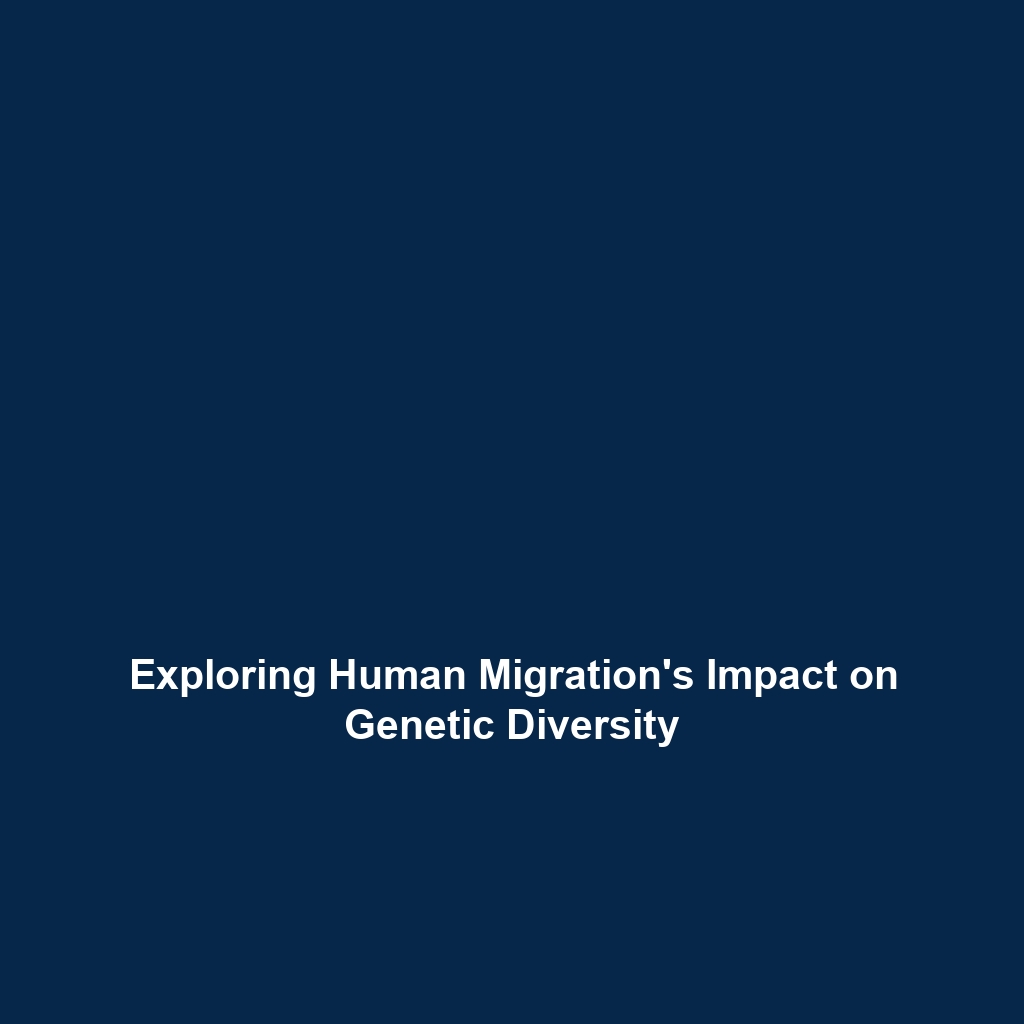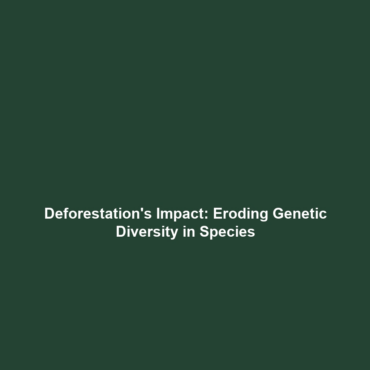Human Migration and Genetic Diversity: Insights into Human Evolution
Introduction
Human migration is a fundamental aspect of human evolution that has significantly influenced genetic diversity among populations. Understanding the patterns, causes, and effects of migration is crucial to comprehending how humans have evolved over millennia. Genetic diversity, shaped by migration and adaptation to various environments, plays a vital role in health, survival, and capacity for change. This article delves into human migration and genetic diversity, exploring their significance within the broader framework of human evolution.
Key Concepts
Migration Patterns and Their Impact
Migration has been a driver of human genetic diversity. Major concepts include:
- Out-of-Africa Theory: The hypothesis that modern humans originated in Africa and migrated to other regions.
- Genetic Drift: Random changes in allele frequencies in small populations, affecting genetic diversity.
- Natural Selection: The adaptive changes to the environment influencing survival and reproduction.
- Gene Flow: The transfer of genetic variation from one population to another, enhancing genetic diversity.
These principles contribute to understanding how human migration not only facilitates adaptation but also fosters genetic variation essential for the resilience of human populations.
Applications and Real-World Uses
The study of human migration and genetic diversity has several practical applications in various fields:
- Medical Research: Understanding genetic predispositions to diseases within different populations aids in tailored treatments.
- Anthropology and History: Tracing human ancestry and migration routes enhances our understanding of cultural development.
- Conservation Biology: Maintaining genetic diversity in endangered species relies on principles derived from human migration studies.
These applications illustrate how insights into human migration and genetic diversity are pivotal in advancing research across disciplines.
Current Challenges
Despite its importance, the study of human migration and genetic diversity faces several challenges:
- Data accessibility and quality can vary widely across regions, hindering comprehensive studies.
- Ethical considerations in genetic research raise concerns about privacy and consent.
- Interdisciplinary collaboration is often required, yet academic silos can impede effective communication.
Future Research and Innovations
The future of research in human migration and genetic diversity promises exciting breakthroughs, such as:
- Genome Sequencing Technologies: Advances in sequencing methods allow for analysis of ancient DNA, offering insights into past migrations.
- Artificial Intelligence: AI algorithms can analyze large datasets, predicting migration patterns and genetic changes.
- Social Genetic Networks: Understanding how social structures influence genetic diversity paves the way for innovative public health strategies.
Conclusion
In conclusion, human migration and genetic diversity are integral to understanding human evolution. They highlight the complex interplay between environment, adaptation, and genetic variation. Continued research in this field is essential not only for academic pursuits but also for real-world applications that can benefit healthcare, anthropology, and environmental conservation. For further reading, explore our articles on ancient DNA research and the importance of genetic diversity.

